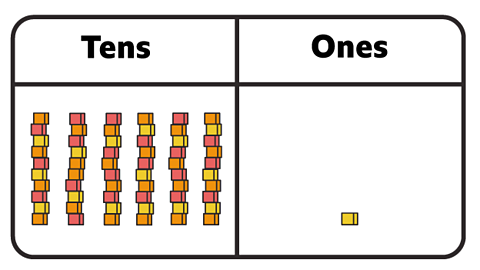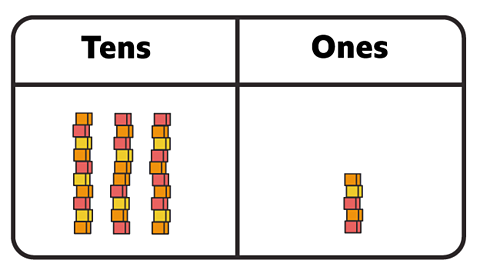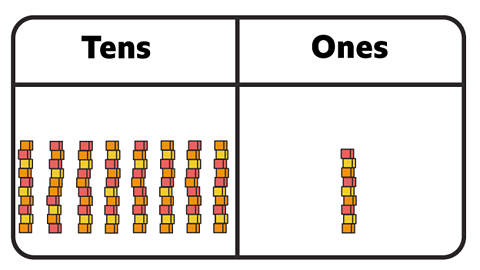Watch: Tens and ones
Hey! This way!
Place value helps us to work out the value of a digit depending on its place or position in a number. But when we get to nine we run out of numbers.
Ah, don't worry little fella.
Now we're going to need something even bigger.
Tens!
Oh phew! There you are!
Now you can see where the different values are placed.
The tens are at the back and the ones out in front
And when we get to 20…
Uh oh! Here we go again!
Partitioning into tens and one
Here are some numbers under 100. Can you partition them into tens and ones?
43, 61, 89, 35
Let’s see how many tens and ones are in each number. We can use a place value chart to help us.

Image caption, 43
43 has 4 tens and 3 ones.
1 of 4
Part-whole diagrams
You can also use a part-whole diagram to show the tens and ones in each number.
Let's look at the same numbers again, but this time let's represent them using a part whole diagram.

Now let's try some more examples.
Which number has 5 tens and 4 ones?
5 tens and 4 ones = 54
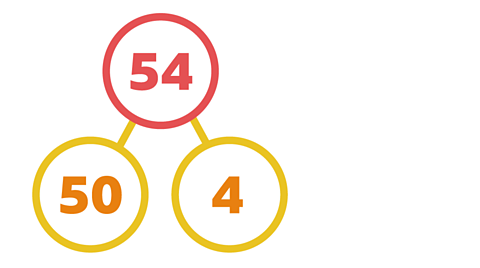

Which number has 3 tens and 8 ones?
3 tens and 8 ones = 38
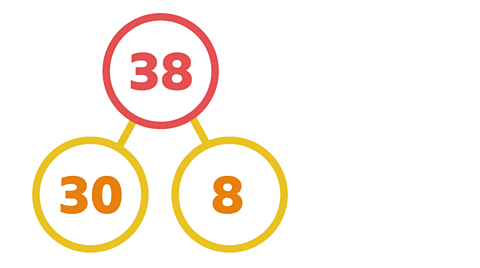

What number has 7 tens and 0 ones?
7 tens and 0 ones = 70
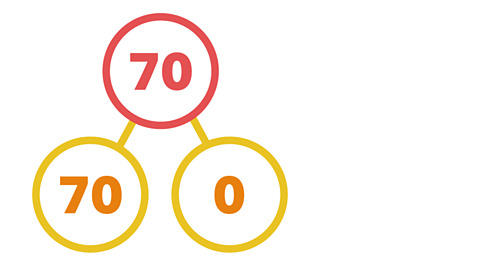
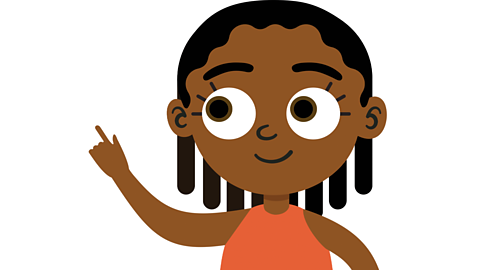
Activity 1
Numbers up to 100 can be partitioned into tens and ones.
Practise partitioning numbers into tens and ones.
The first digit is the tens and the last digit is the ones.
In 17 sweets, there are 1 ten and 7 ones.

In 23 apples, there are 2 tens and 3 ones.

